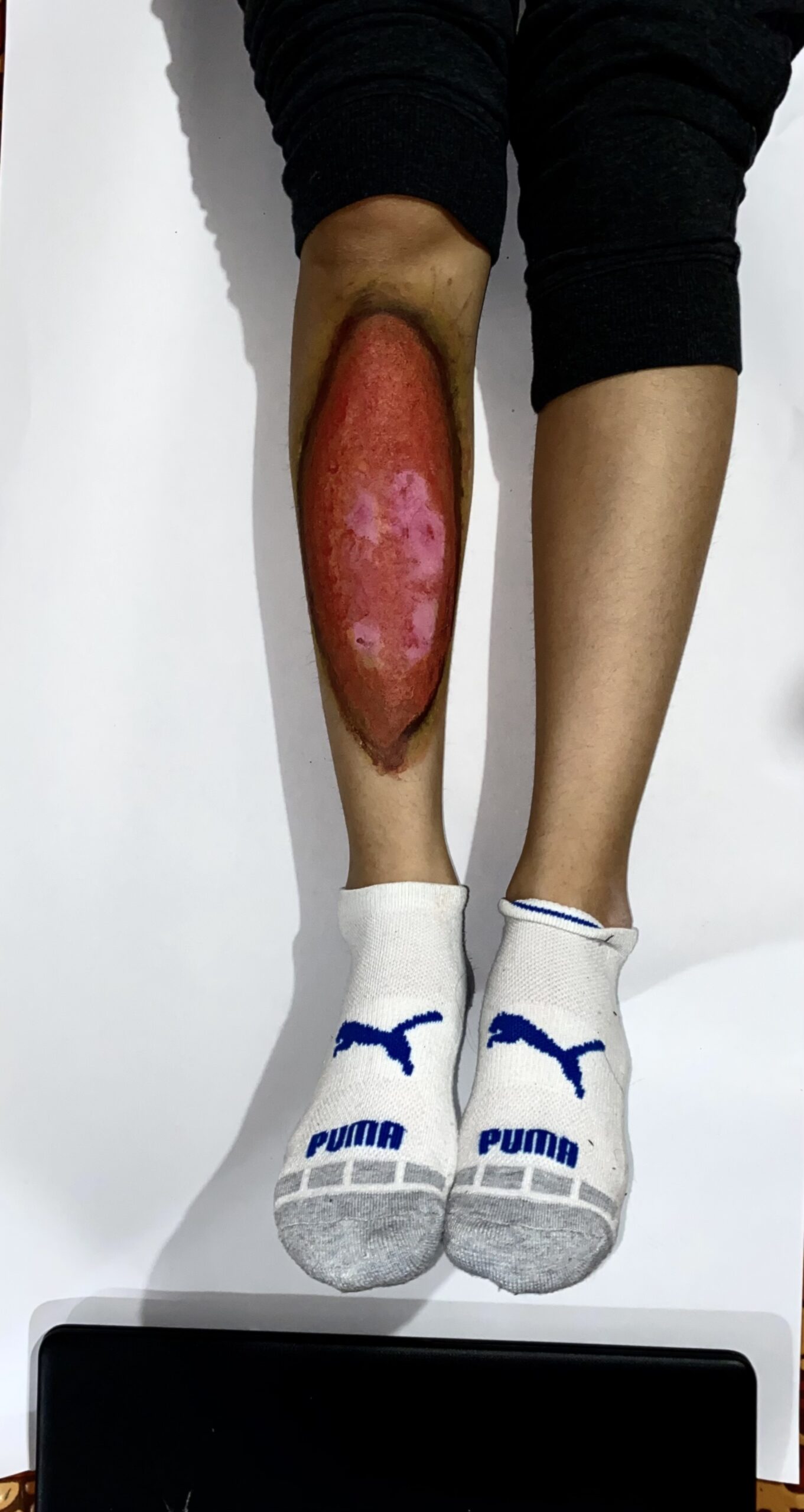My STEAM project is on Necrotizing Fasciitis also known as the “Flesh-Eating Infection.” I chose to use both paint and makeup to recreate Necrotic Tissue on my model’s leg. I chose three photos, with different lighting, of my model’s leg to highlight the difference in what the disease looks like compared to regular healthy tissue.




Necrotizing Fasciitis is a flesh eating bacterial infection that originates in the integumentary system and if not treated early can affect the fascia of the muscle and bone. This infection begins with a breach in the integumentary system’s first lines of defense, often nothing more than a small cut in the epidermis. This cut leaves the deeper layers of the skin open to various strains of bacteria to propagate and the area and form fluid filled blisters. The superficial site of the infection spreads in diameter as well as in depth. The outer ring of flesh will appear deeps red to black as the tissue dies (necrosis). As the infection works its way into the deeper layers of fascia, the area becomes foul-smelling as puss fills the site. These symptoms are the onset of gangrene. Untreated, the infection will spread to other body systems and once established, sepsis may lead to organ failure and eventually death. Early treatment is essential and includes antibiotics, removal of all necrotic flesh and proper wound care. Norton, 2021 depicts the flesh eating bacterial infection with moulage on the anterior lower right limb. The origin site of the infection is displayed in bright red and as the infection fans out becomes a deeper red and eventually black on the outer ring to represent the progress of necrosis. Risk for developing necrotizing fasciitis increases if you are diabetic, have a weak immune system, are advanced in age, or have peripheral vascular disease, however healthy people may also become infected. Prevention includes good hygiene and avoiding swimming with open cuts.